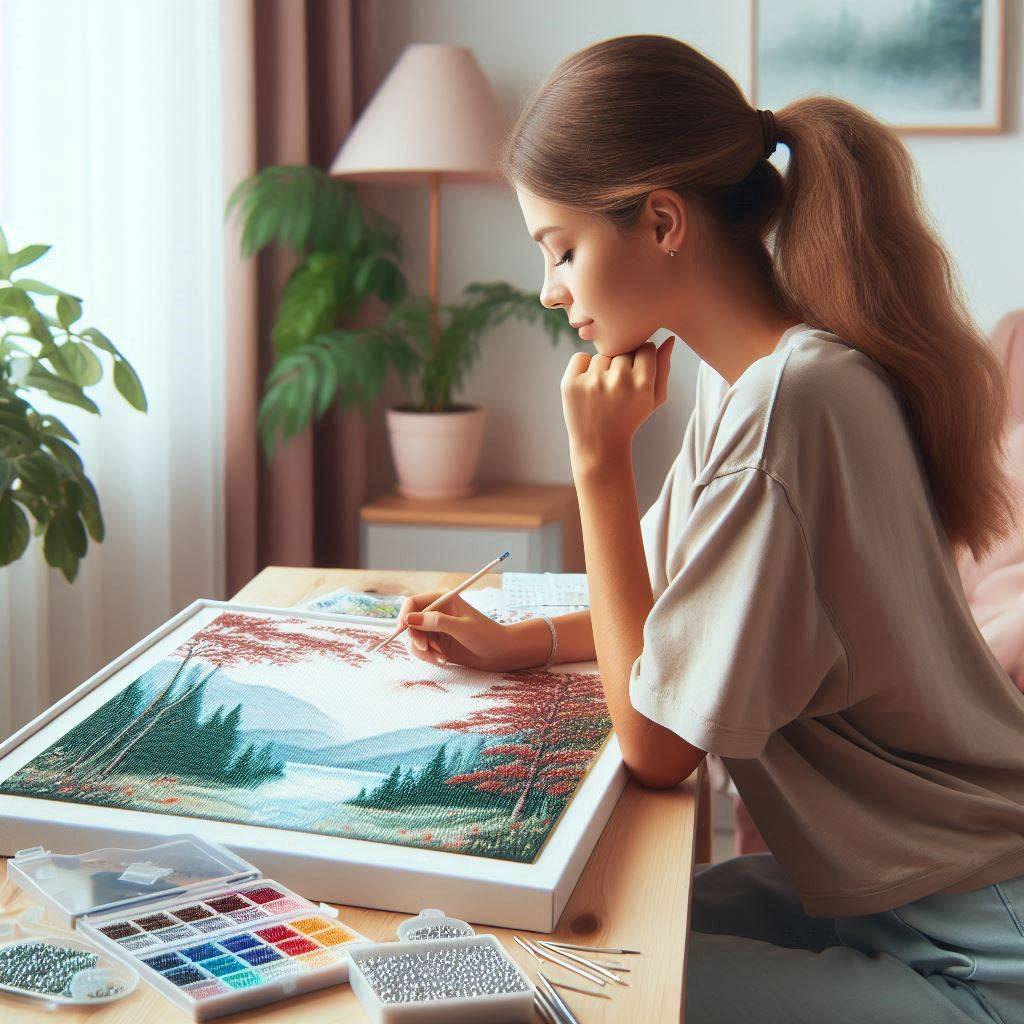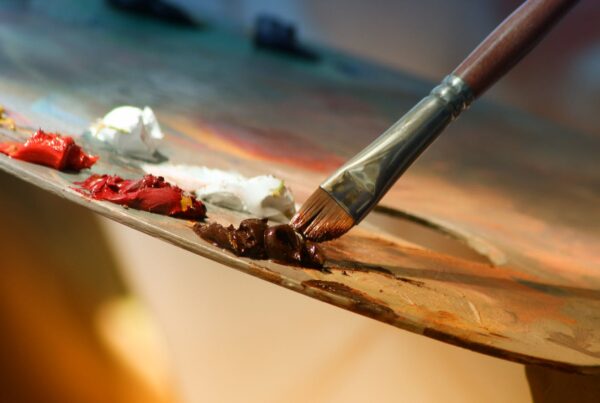Disclosure Sponsored Links: This post contains a paid-for sponsored link, meaning we have received compensation in exchange for including it. Sponsorship does not influence our content, but we believe in transparency regarding paid placements.
Diamond painting has emerged as a beloved art hobby, offering both creativity and relaxation. For enthusiasts aiming to achieve professional-quality results, mastering certain techniques is crucial. By paying attention to detail and utilising the right tools, one can create stunning, sparkling artwork that rivals traditional paintings.
A well organised setup is the foundation of success in diamond painting. This includes using a clean workspace, proper lighting, and setting up materials in a manner that enhances efficiency. A creative diamond painting kit can significantly streamline the process and ensure that every aspect, from tool selection to diamond placement, is handled with precision.

Mastering the technique involves not just placing diamonds but also handling common challenges effectively. Simple strategies like using a diamond painting ruler to ensure even spacing and keeping tools clean and ready can immensely improve the final product. These practices help in achieving a flawless outcome that can be cherished for years to come.
Table of Contents
Key Takeaways
- Use a well-organised setup for efficiency
- Practice precision and attention to detail
- Handle common challenges with simple strategies
Essential Tools and Setup
For successful diamond painting, having the right tools and a well-prepared workspace is crucial. This section covers the key tools you need and how to set up your workspace for smooth and enjoyable diamond painting.
Selecting the Right Tools
Choosing quality tools can significantly impact your diamond painting experience. Diamond painting kits typically include a printed canvas, stylus pen, wax, adhesive, and beads. Investing in a quality stylus pen and light pad can help you place diamonds more accurately.
Tweezers are essential for adjusting misplaced diamonds and tackling intricate details. A diamond applicator tool enables efficient diamond placement. Use a tray to organise and manage the beads, keeping your workspace neat.
Wax pads help pick up and position beads properly. Remember, using a small amount of wax prevents excess from sticking to your canvas. A diamond painting ruler can be useful to ensure even spacing between drills for a polished finish. Additionally, ensure your kit includes all the necessary adhesive.
Preparing Your Workspace
Setting up a suitable workspace enhances efficiency and enjoyment. Choose a flat surface like a table or desk in a well-lit area. Good lighting, including a portable light pad, helps reduce eye strain and enhances precision.
Organise your workspace to avoid clutter. Use labeling systems to sort and identify your diamonds by color, typically provided in most kits. Labelling and organising diamond packets beforehand saves time and prevents confusion during your project.
Regularly clean your tools with a soft cloth. Store them in a cool, dry place away from direct sunlight to extend their lifespan. Practicing these organisational habits ensures a smoother diamond painting process and better results.
Mastering the Technique and Handling Common Challenges
Mastering diamond painting involves achieving precision, maintaining cleanliness, organising tools effectively, and knowing how to seal and display your finished works.
Achieving Precision and Uniformity
To achieve precision in diamond painting, start by using high-quality adhesive canvas and diamond drills. Using a light pad can improve visibility and placement accuracy. Apply even pressure to your applicator tool when picking up drills and placing them on the canvas. A diamond painting ruler can help maintain consistent spacing. For round drills, use tweezers for better control. Consistently clean your tools and workspace to prevent dust and dirt from affecting the adhesive.
Organising and Storage Tips
Effective organisation is essential for both beginners and experienced artists. Label and sort your diamond drills by color and symbol using storage boxes or portfolio cases. Legend charts on the pre-printed canvas help in identifying and organising the drills correctly. Store your tools in a cool, dry place, protected from sunlight to avoid damage. Using masking tape can help label different sections of your work area. Diamond painting kits often come with separate containers that are useful for proper storage.
Preventing and Fixing Mistakes
To avoid common mistakes, work methodically and take regular breaks. Symbols on the sticky canvas can sometimes be confusing; always double-check them before placing a drill. If you make an error, gently use tweezers to lift the drill and correct it. For issues like air bubbles or misplaced drills, masking tape can help adjust placement. To prevent spills and adhesive canvas contamination, handle the drills with care and work in a clean environment. Using dryer sheets can help reduce static cling in drills.
Sealing and Framing Finished Works
Once your diamond painting is complete, sealing it can protect against dust and dirt. Using a sealant like Mod Podge will keep the drills in place. Apply the sealant evenly over the surface and let it dry thoroughly. For framing, you can use DIY framing kits or have it professionally framed. Poured glue adhesives generally perform better for long-term display. Choose a frame that complements the canvas design and suits your personal preference.
Proper organisation and care at each step will enhance your experience and the quality of your finished artwork. Follow these techniques for professional-looking results.
Conclusion
Achieving professional results in diamond painting hinges on precision, proper tool use, and meticulous organisation. Key techniques include using a diamond painting ruler to ensure even spacing and applying wax sparingly to avoid excess residue.
Storing and labeling diamond packets efficiently aids in maintaining workflow. Regularly clean tools and store them appropriately to extend their lifespan. Sealing completed works with the correct sealant can preserve their sparkle and longevity.
Professionals emphasise the importance of attention to detail and patience throughout the process to produce stunning artwork. Employing these techniques can elevate the quality of any diamond painting project.








